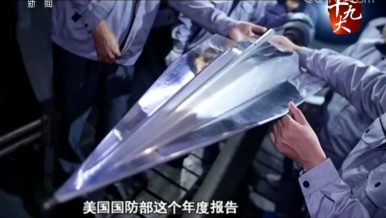By Ankit Panda
 The word “hypersonic” conjures up the idea of immense speed, as it should. The word itself refers to any speeds in excess of five times the speed of sound, or Mach 5. Nevertheless, burgeoning hypersonic technologies stand to challenge strategic stability between superpowers. For years, the United States, Russia, and China have been investing considerable resources into the research and development of hypersonic glide vehicles – a decades-old concept that only now is seeing widespread interest.
The word “hypersonic” conjures up the idea of immense speed, as it should. The word itself refers to any speeds in excess of five times the speed of sound, or Mach 5. Nevertheless, burgeoning hypersonic technologies stand to challenge strategic stability between superpowers. For years, the United States, Russia, and China have been investing considerable resources into the research and development of hypersonic glide vehicles – a decades-old concept that only now is seeing widespread interest.
These weapons, at their core, involve a simple trade-off that sets them apart from their simpler ballistic missile counterparts. They sacrifice long-range ballistic missile re-entry speeds for extended range and their flight pattern allows them to present unique challenges to existing ballistic missile defence systems.
Hypersonic boost-glide weapons also feature more complex trajectories compared to the roughly parabolic ones seen in ballistic missiles, posing further challenges for missile defense.
For now, China appears to be in the lead with hypersonic weapons technology, at least as far as a battlefield-ready implementation is concerned. In November, the People’s Liberation Army Rocket Force conducted the first flight tests of a new missile known as the DF-17.
The DF-17 is the first missile system anywhere that uses a hypersonic glide vehicle as its payload and is intended for operational deployment. While the United States and Russia have both conducted developmental tests, neither country is known to have taken concrete steps towards deploying these systems.
With U.S. intelligence expecting the DF-17 to enter service around 2020, the Rocket Force has some time to go before it introduces this new system.
The effects of its deployment in Asia could be destabilizing. With a nuclear or conventional payload, the DF-17 would pose a threat to U.S. missile defense systems and military infrastructure in the Asia-Pacific region. By flying at a lower altitude than a ballistic missile, the DF-17’s hypersonic glide vehicle would pose a considerable challenge to systems like the U.S. Terminal High Altitude Area Defense (THAAD) system and Japan’s soon-to-be-deployed Aegis Ashore installations.
It is important to keep these weapons in perspective, however. While hypersonic glide vehicles present new challenges for missile defence, these aren’t necessarily insurmountable for the United States.
For instance, the comparatively lower speed of hypersonic gliders compared to long-range ballistic missile re-entry vehicles means that capable point-defense systems in the future may be able provide some defensive capability. (Some hypersonic boost-glide weapons can address this by adding maneuverability to the final stages of their flight.)
Along these lines, the U.S. Missile Defence Agency is already working on next-generation point-defence systems to guard against these new ballistic missiles. As China marches ahead with the DF-17 and potentially other hypersonic boost-glide weapons, the United States will find itself playing catch-up with missile defence – a costly proposal that ultimately does little to address the fundamentally destabilising nature of these weapons.
With China’s testing of the DF-17, it is likely that the Trump administration’s upcoming Nuclear Posture Review may address the destabilising nature of these weapons and clarify a U.S. response. What remains lacking in the area of hypersonics is any serious attempt at bilateral or trilateral confidence- or norm-building between the United States, Russia and China.
It’s far from too late for the United States and China to address mutual concerns before both sides enter an arms race around hypersonic weapons, but the Trump administration does not appear to be positively disposed towards that kind of a discussion. For now, China’s hypersonic ambitions appear set to march ahead unabated.
This article first appeared in the South China Morning Post. It is republished here with kind permission.
No comments:
Post a Comment